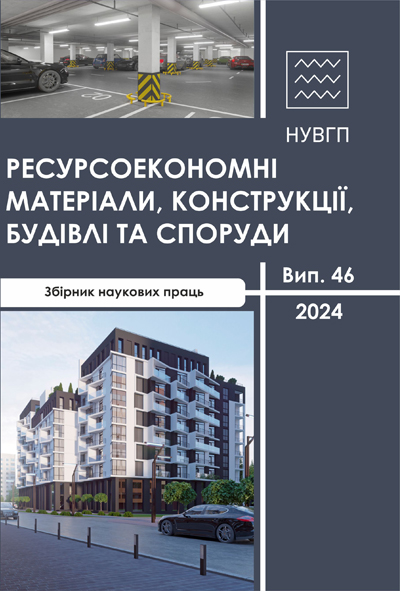CHANGE OF THE GEOMETRIC CHARACTERISTICS OF THE REDUCED STEEL-CONCRETE SECTION DURING THE TWO-STAGE MANUFACTURE OF SELF-TENSIONING STORAGE FLOORS
DOI:
https://doi.org/10.31713/budres.v0i46.34Abstract
Atypical architectural and structural solutions for built-in civil protection shelters can be solved with monolithic or precast concrete and steel-reinforced concrete structures. Steel-reinforced concrete floors successfully combine the positive properties of steel and concrete. However, in order to ensure their joint operation, it is necessary to determine the effect of each component on the overall bearing capacity of the resulting composite structures with sufficient accuracy. The aim of the study is to determine the change in the geometric characteristics of the reduced steel-concrete section of the floor structures, taking into account different geometric dimensions of the cross-section and physical and mechanical characteristics of the materials of the composite core. The geometric characteristics of the composite section change due to the two-stage manufacturing technology. At the first stage of operation of such slabs, the geometric characteristics of monosteel sections are easy to determine. However, at the second stage of operation of the composite core, it is necessary to determine the geometric parameters of the concrete shelf, which is included in the determination of the geometric characteristics of the reduced section, quite clearly. It has been determined that for low classes of concrete of a monolithic slab, the accurate determination of the effective width of the concrete shelf significantly affects the bearing capacity of a reinforced concrete slab. For high concrete classes of a monolithic slab, an increase in the width of the shelf taken into account in the calculation slightly changes the bearing capacity of the reinforced concrete slab.

